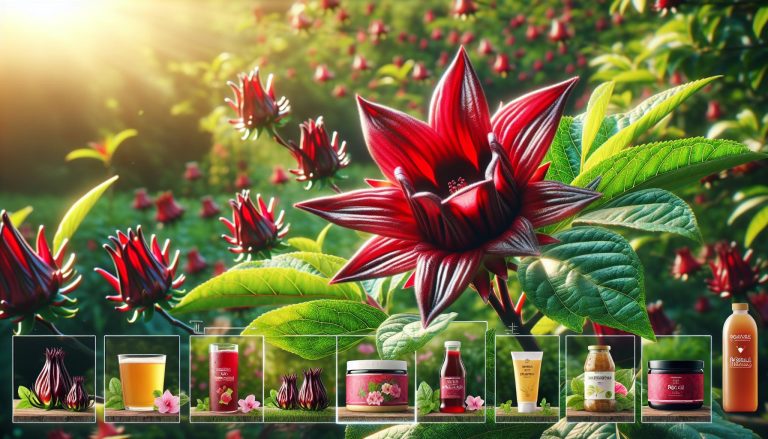Dinner Plate Hibiscus: Growing Tips, Winter Care, and Propagation Methods
As a passionate gardener, I’m always on the lookout for stunning plants that make a bold statement. That’s why I’ve fallen head over heels for the dinner plate hibiscus. Have you ever seen a flower so large it could rival the size of an actual dinner plate? That’s exactly what this showstopper delivers!
Native to North America, the dinner plate hibiscus (Hibiscus moscheutos) is a perennial marvel that’ll transform any garden into a tropical paradise. With blooms reaching up to 12 inches in diameter, it’s no wonder these flowers stop people in their tracks. But there’s more to this beauty than just its size. Did you know that despite its tropical appearance, it’s surprisingly hardy and can thrive in cooler climates?
What Is Dinner Plate Hibiscus?
Dinner plate hibiscus is a stunning perennial plant known for its enormous, eye-catching blooms. It’s a member of the Malvaceae family and boasts flowers that can reach up to 12 inches in diameter, rivaling the size of an actual dinner plate.
Origin and Botanical Classification
The dinner plate hibiscus, scientifically known as Hibiscus moscheutos, is native to North America. It’s commonly found in wetlands and marshes across the eastern and southern United States. This plant belongs to the genus Hibiscus, which includes over 200 species of flowering plants.
Taxonomically, dinner plate hibiscus is classified as follows:
| Kingdom | Phylum | Class | Order | Family | Genus | Species |
|---|---|---|---|---|---|---|
| Plantae | Tracheophyta | Magnoliopsida | Malvales | Malvaceae | Hibiscus | H. moscheutos |
Distinctive Features
Dinner plate hibiscus stands out with its remarkable characteristics:
- Flower size: Blooms measure 6-12 inches across
- Color variety: Flowers range from white to pink, red, and bicolor
- Foliage: Large, heart-shaped leaves with serrated edges
- Growth habit: Upright, bushy shrub reaching 4-6 feet tall
- Bloom time: Late summer to early fall
The plant’s massive flowers open in the morning and typically last only one day, but new blooms appear daily during the flowering season. Despite its tropical appearance, dinner plate hibiscus is surprisingly hardy, thriving in USDA zones 4-9.
Growing Dinner Plate Hibiscus
Growing dinner plate hibiscus requires specific conditions and care to thrive. I’ve found that these stunning plants can be a rewarding addition to any garden when given the right attention.
Ideal Climate and Conditions
Dinner plate hibiscus thrives in full sun with at least 6 hours of direct sunlight daily. These plants prefer:
- USDA hardiness zones 4-9
- Temperatures between 60-85°F (15-29°C)
- Well-draining, rich soil with pH 6.0-6.8
- High humidity levels
- Protection from strong winds
In colder regions, I plant them near south-facing walls to provide extra warmth and shelter. During winter, I mulch the base to protect the roots from freezing temperatures.
Planting and Care Tips
To successfully grow dinner plate hibiscus:
- Space plants 3-4 feet apart
- Water deeply and regularly, keeping soil consistently moist
- Fertilize monthly during growing season with a balanced, water-soluble fertilizer
- Prune in late winter or early spring before new growth begins
- Monitor for pests like aphids and Japanese beetles
I’ve learned that these plants are heavy feeders. A slow-release fertilizer applied in spring can boost growth and flowering. For container growing, use a pot at least 12 inches deep with drainage holes.
To encourage bushier growth, I pinch back new shoots when the plant reaches 1 foot tall. This technique promotes a fuller, more compact shape.
Remember, dinner plate hibiscus blooms on new wood, so don’t be afraid to prune aggressively. In my experience, this practice leads to more abundant flowering in the long run.
Popular Varieties of Dinner Plate Hibiscus
Dinner plate hibiscus comes in several stunning varieties, each with its own unique characteristics. Here are three popular cultivars that gardeners love for their impressive blooms and vibrant colors.
‘Kopper King’
‘Kopper King’ is a standout variety known for its striking foliage and flowers. The leaves are deeply lobed and have a rich, coppery-purple color that provides a beautiful backdrop for the blooms. Its flowers are massive, reaching up to 12 inches in diameter, with a pale pink to white color adorned with a deep red eye. The petals have ruffled edges, adding to their charm. This variety typically grows 3-4 feet tall and wide, making it a perfect focal point in garden beds or large containers.
‘Luna Red’
‘Luna Red’ is a compact variety that’s ideal for smaller gardens or containers. It grows to about 2-3 feet tall and wide, producing bold red flowers that can reach 6-8 inches across. The blooms have a slight sheen to them, giving them an eye-catching luster in the sunlight. ‘Luna Red’ is known for its long blooming period, often flowering from midsummer until the first frost. Its dark green foliage provides a nice contrast to the vibrant red blooms, making it a striking addition to any garden landscape.
‘Midnight Marvel’
‘Midnight Marvel’ lives up to its name with its dramatic coloration. This variety features deep wine-purple foliage that maintains its color throughout the growing season. The flowers are a brilliant scarlet red, measuring 8-9 inches across, and stand out beautifully against the dark leaves. ‘Midnight Marvel’ grows to about 4 feet tall and 4-5 feet wide, creating a impressive presence in the garden. It’s particularly stunning when planted in groups or as a backdrop for lighter-colored plants. This variety is also known for its excellent resistance to leaf scorch, a common issue with some hibiscus plants.
Landscaping With Dinner Plate Hibiscus
Dinner plate hibiscus adds a bold, tropical flair to any landscape. Its impressive blooms and striking foliage create focal points in gardens, borders, and container plantings.
Design Ideas
- Use as a backdrop: Plant dinner plate hibiscus at the back of borders to create a stunning backdrop for shorter plants.
- Create a hedge: Plant several hibiscus in a row for a colorful, flowering hedge.
- Tropical oasis: Combine with other large-leaved plants like cannas or elephant ears for a lush, tropical look.
- Container gardening: Grow in large pots on patios or decks for a portable tropical display.
- Accent plant: Use a single specimen as a focal point in a mixed perennial bed.
- Water garden edge: Plant near ponds or water features to enhance the tropical atmosphere.
Companion Plants
Dinner plate hibiscus pairs well with various plants that complement its bold presence:
- Ornamental grasses:
- Fountain grass
- Switchgrass
- Maiden grass
- Late-blooming perennials:
- Black-eyed Susans
- Coneflowers
- Asters
- Tropical-looking plants:
- Cannas
- Elephant ears
- Caladiums
- Contrasting foliage:
- Hostas
- Heucheras
- Coleus
- Complementary bloomers:
- Daylilies
- Salvias
- Bee balm
When pairing plants, consider bloom times, colors, and textures to create a harmonious and visually appealing landscape design.
Pests and Diseases of Dinner Plate Hibiscus
Dinner plate hibiscus, while generally robust, can face challenges from pests and diseases. Understanding these issues and their solutions is crucial for maintaining healthy plants.
Common Problems
Dinner plate hibiscus often encounters several pests and diseases:
- Japanese beetles: These metallic green insects feed on leaves, leaving behind skeletonized foliage.
- Aphids: Tiny sap-sucking insects that cluster on new growth, causing distorted leaves.
- Spider mites: Microscopic arachnids that create fine webbing and cause stippling on leaves.
- Whiteflies: Small, white flying insects that congregate on the undersides of leaves.
- Hibiscus sawfly larvae: Green caterpillar-like insects that can quickly defoliate plants.
- Leaf spot: Fungal disease causing dark spots on leaves, potentially leading to defoliation.
- Root rot: Soil-borne fungal disease causing wilting and yellowing of leaves.
Prevention and Treatment
To keep dinner plate hibiscus healthy:
- Promote good air circulation by proper spacing and pruning.
- Water at the base of the plant to keep foliage dry.
- Remove debris and fallen leaves regularly to prevent disease spread.
- Use organic mulch to maintain soil moisture and suppress weeds.
For pest control:
- Handpick Japanese beetles and drop them in soapy water.
- Spray strong jets of water to dislodge aphids and spider mites.
- Apply neem oil or insecticidal soap for persistent infestations.
- Introduce beneficial insects like ladybugs to control aphid populations.
For disease management:
- Apply copper-based fungicides for leaf spot diseases.
- Improve drainage and reduce watering for root rot issues.
- Prune affected areas and dispose of infected plant material.
I’ve found that regular inspection of plants helps catch problems early. By implementing these strategies, you’ll keep your dinner plate hibiscus thriving and disease-free.
Winter Care for Dinner Plate Hibiscus
Preparing for Dormancy
Dinner plate hibiscus plants enter dormancy as temperatures drop. I’ve learned to prepare them for this phase by:
- Reducing watering gradually in late fall
- Stopping fertilization 6-8 weeks before first frost
- Cutting back stems to 4-6 inches above ground after first frost
- Applying a 3-4 inch layer of mulch around the base
These steps help the plant conserve energy and protect its root system during winter.
Overwintering in Cold Climates
In zones 4-5, dinner plate hibiscus needs extra protection. Here’s what I do:
- Build a protective cage around the plant using chicken wire
- Fill the cage with dry leaves or straw
- Cover the cage with burlap or frost cloth
- Secure the cover with stakes or ties
This cocoon shields the plant from harsh winds and freezing temperatures.
Indoor Winter Care
For container-grown dinner plate hibiscus:
- Move pots indoors before first frost
- Place in a cool, dark area (40-50°F)
- Water sparingly, keeping soil barely moist
- Check monthly for pests or diseases
Indoor overwintering prevents root damage and ensures a healthy spring emergence.
Spring Wake-Up
As winter fades, it’s time to wake up your dinner plate hibiscus:
- Remove protective coverings gradually
- Prune dead or damaged stems
- Resume regular watering as new growth appears
- Apply a balanced, slow-release fertilizer
This gentle reintroduction to outdoor conditions sets the stage for a vibrant growing season.
Propagation Methods
Dinner plate hibiscus can be propagated through several methods, each with its own advantages. Here are the most effective ways to expand your collection:
Seed Propagation
Seed propagation is an economical way to grow dinner plate hibiscus:
- Collect seeds from mature seed pods in fall
- Soak seeds in warm water for 24 hours before planting
- Plant seeds 1/4 inch deep in well-draining soil
- Keep soil moist and warm (70-75°F)
- Expect germination in 2-3 weeks
Seedlings may not always resemble the parent plant, adding an element of surprise to your garden.
Stem Cuttings
Stem cuttings offer a reliable method for creating clones of your favorite plants:
- Take 4-6 inch cuttings from new growth in spring or early summer
- Remove lower leaves, leaving 2-3 at the top
- Dip cut end in rooting hormone
- Plant in a mixture of peat moss and perlite
- Keep cuttings in a humid environment
- Roots should develop in 3-4 weeks
I’ve found that using a clear plastic bag over the pot helps maintain humidity and speeds up rooting.
Division
Division is an excellent way to propagate mature plants:
- Best done in early spring before new growth emerges
- Dig up the entire plant
- Separate the root ball into 2-3 sections, each with healthy roots and shoots
- Replant divisions immediately
- Water thoroughly and keep soil moist until established
This method not only propagates but also rejuvenates older plants.
Grafting
Grafting is a more advanced technique used primarily by experienced gardeners:
- Select a compatible rootstock
- Make a clean diagonal cut on both rootstock and scion
- Join the two cuts and secure with grafting tape
- Keep the graft union moist and protected until it heals
While challenging, grafting can produce unique combinations and stronger plants.
Air Layering
Air layering is useful for propagating larger branches:
- Make a small incision in a healthy branch
- Apply rooting hormone to the wound
- Wrap the area with moist sphagnum moss
- Cover with plastic wrap to retain moisture
- Once roots form (4-8 weeks), cut below the rooted section and plant
This method is particularly effective for dinner plate hibiscus varieties that are difficult to root from cuttings.
By mastering these propagation methods, you’ll be able to expand your dinner plate hibiscus collection and share these stunning plants with fellow gardeners.
Conclusion
Dinner plate hibiscus is a stunning addition to any garden with its massive blooms and vibrant colors. I’ve shared insights on caring for these beautiful plants from planting to winter protection and propagation. By following these tips you’ll be well-equipped to grow and maintain healthy dinner plate hibiscus plants. Whether you’re a seasoned gardener or just starting out these eye-catching perennials are sure to bring joy and beauty to your outdoor space. With proper care and attention your dinner plate hibiscus will thrive and become a showstopping focal point in your garden for years to come.






